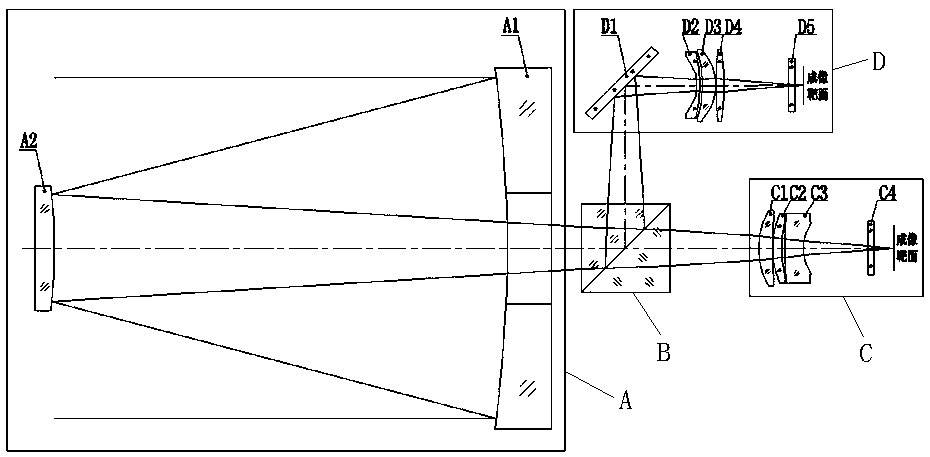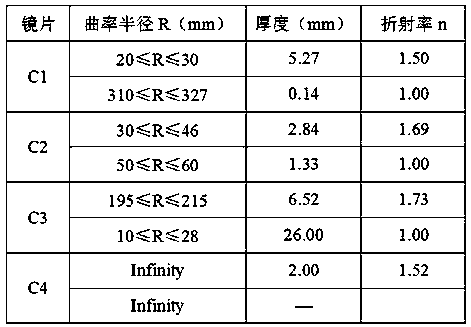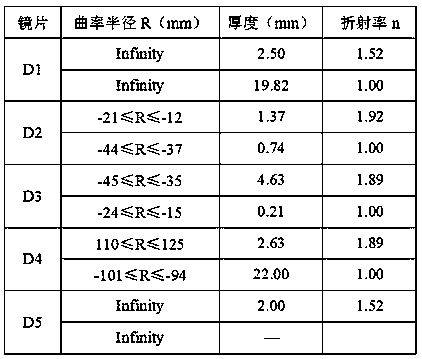Visible light and short-wave infrared dual-waveband common-aperture long-focus optical system
A short-wave infrared and optical system technology, applied in optics, optical components, instruments, etc., can solve problems such as large difference in visual experience, expensive infrared materials, and easy to affect target recognition, so as to improve the utilization rate of light energy and enhance the target Reconnaissance ability, reduced length effect
- Summary
- Abstract
- Description
- Claims
- Application Information
AI Technical Summary
Problems solved by technology
Method used
Image
Examples
Embodiment Construction
[0020] The present invention will be described in further detail below in conjunction with the accompanying drawings and specific embodiments.
[0021] Such as figure 1 As shown, the present invention is a visible light, short-wave infrared dual-band common-aperture telephoto optical system, the optical system includes a public mirror group A, a dichroic prism B, a visible light mirror group C and a short-wave infrared mirror group D, and the common mirror group A and beam-splitting prism B are arranged from left to right along the incident light path, beam-splitting prism B divides the outgoing light from common mirror group A into right and upper two paths, and the right and upper two paths pass through visible light mirror group C and The short-wave infrared mirror group D performs simultaneous imaging, and the common mirror group A, the dichroic prism B and the visible light mirror group C form a visible light path, which is received and imaged by the visible light detecto...
PUM
 Login to View More
Login to View More Abstract
Description
Claims
Application Information
 Login to View More
Login to View More - R&D
- Intellectual Property
- Life Sciences
- Materials
- Tech Scout
- Unparalleled Data Quality
- Higher Quality Content
- 60% Fewer Hallucinations
Browse by: Latest US Patents, China's latest patents, Technical Efficacy Thesaurus, Application Domain, Technology Topic, Popular Technical Reports.
© 2025 PatSnap. All rights reserved.Legal|Privacy policy|Modern Slavery Act Transparency Statement|Sitemap|About US| Contact US: help@patsnap.com



